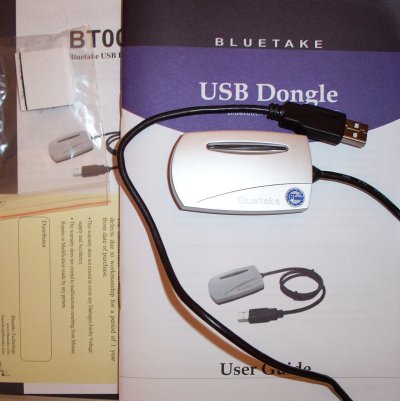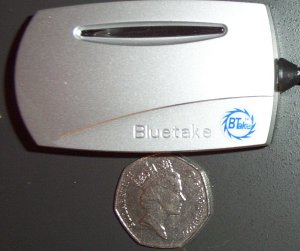Introduction
|
There are certain buzzwords that seem to be in-vogue right now, one of those words happens to be Bluetooth. Chances are that you've come across it either in the press, or whilst perusing sites online. I'm going to quote the official line on Bluetooth, so here goes. The Bluetooth concept is a cable replacement technology that simplifies person-to-person and machine-to-machine interaction. It utilizes short-distance radio link technology to enable the wireless connection of mobile terminals such as desktops, laptops, printer, PDAs and mobile phones can exchange data or voice with one another. Furthermore, Bluetooth operates at a frequency lying between 2,402GHz and 2,480GHz, the ISM (Industry, Scientific, Medical) band that is meanwhile free and unlicensed throughout the world. Bluetooth was developed jointly by Ericsson, Nokia, IBM, Toshiba and Intel. Ericsson contributed the basic radio technology expertise; Toshiba and IBM are developing a common specification for integrating "Bluetooth" technology into mobile devices. Intel are contributing their advanced chip and software expertise and Nokia contributes expertise in radio technology and mobile handset software. Got that ?, good. Basically, it appears to be the successor to infrared communication by providing a more flexible wireless transfer method. Not quite as powerful as WLAN, it is a step in the right direction. The effective range of Bluetooth devices is dictated by their power output. Class I devices are reckoned to have a maximum line-of-sight range of 100 metres. To accomplish this, they can use up to 100mW of power. Class II devices are consume a maximum of 2.5mW and have an effective range of 10 metres, Lastly, Class III devices are the baby of the bunch, using up to 1mW, with an effective range of 1 metre. Today, I'm looking at a couple of Bluetooth-enabled devices from a company called Bluetake. Whilst this name may not be immediately recognisable to our readers, Bluetake's parent company, Thermaltake, most probably is. Thermaltake are well-known for producing fans and heatsinks among other cooling items. Bluetake was formed to take advantage of the emerging wireless communication market. We see the fruit of their labours today. Put simply, the Bluetake USB Dongle is an USB-powered bluetooth-enabled transceiver that facilitates communication with any other bluetooth-enabled device. An increasing number of premium mobile phones are now bluetooth-equipped, so are a number of PDAs, high-end printers and various other peripherals. The idea is to make the working environment as cable-free as possible whilst retaining a connections with all the devices concerned. The Dongle is packaged in one of two boxes. You can either buy the standalone Dongle or opt for a dual Dongle pack. Contained within the box was the Dongle itself with an USB connection, the lead measured around 40cm. You also get a decent user-guide, a quickstart guide, a driver CD, a warranty card and a 4 velcro pads for fastening the Dongle in a position that suits you best.
The dongle is surprisingly small, probably due to the fact that the bluetooth chip itself is tiny. The following picture with a 50 pence coin for size comparison will tell you just how compact it is. Incidentally, once connected, a little blue light shows up in the slit at the top of the Dongle, nice touch.
Specifications in detail Bluetooth v1.1 available A tidy little package. Note the maximum transfer speed of 1MBit/s which translates to around 125KB/s, or double a standard cable-modem's speed. Not blazingly quick by any means, as standard wireless 802.11b communication has a theoretical maximum speed of 1.4MB/s. I must temper this by saying that the other relatively low-cost wireless form of communication, namely infrared, only boasts a maximum transfer speed of around 14KB/s. As this is a Class I Bluetooth device, we have a maximum range of supposedly 100 metres. Let's have a look at the
diminutive adaptor now. |











